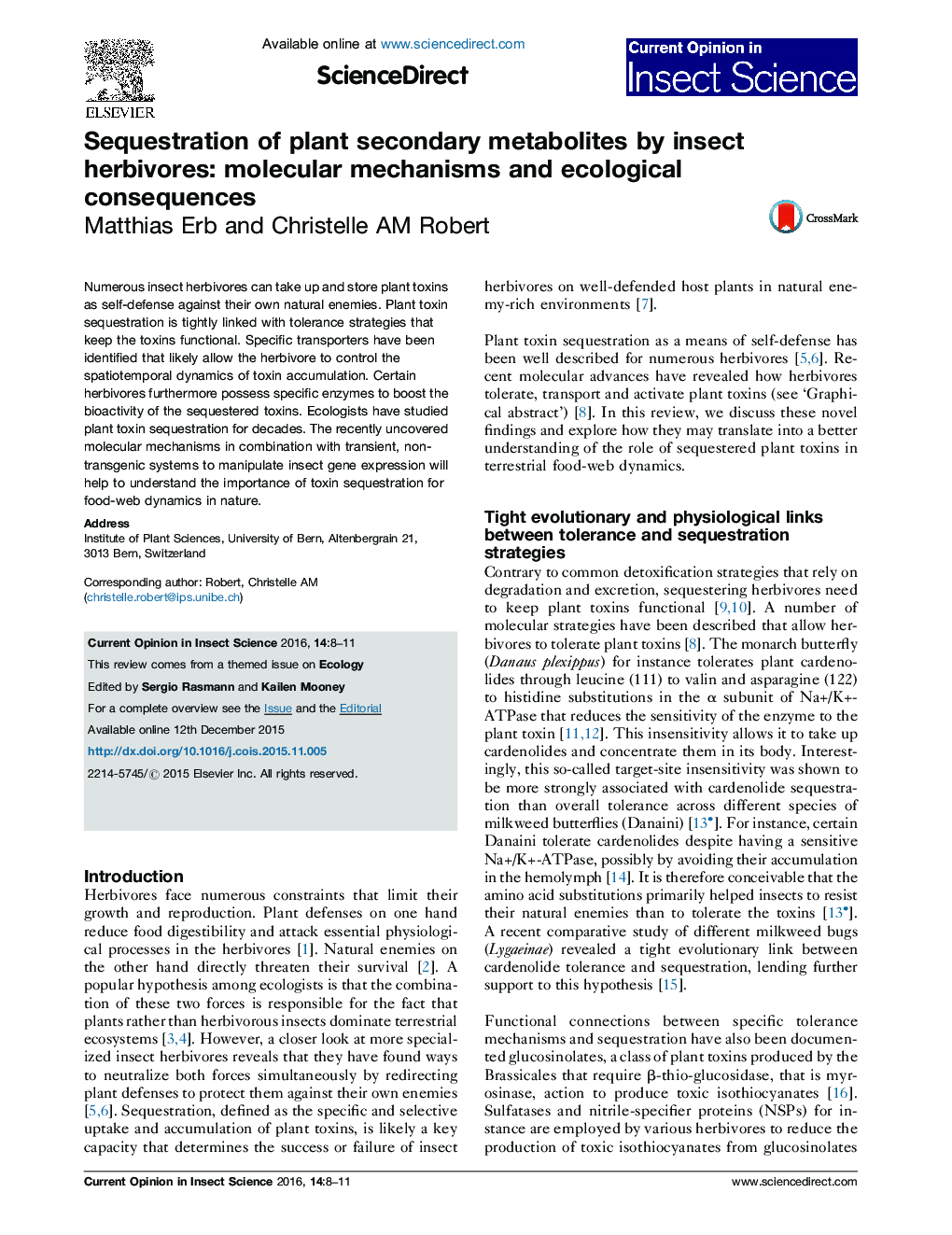| کد مقاله | کد نشریه | سال انتشار | مقاله انگلیسی | نسخه تمام متن |
|---|---|---|---|---|
| 4508172 | 1624376 | 2016 | 4 صفحه PDF | دانلود رایگان |
• Specialist herbivores sequester and use plant toxins for self-defense.
• Molecular mechanisms of toxin sequestration have recently been uncovered.
• Specific insect enzymes transport, activate and tolerate plant toxins.
• The future: molecular, manipulative studies of natural food-webs.
Numerous insect herbivores can take up and store plant toxins as self-defense against their own natural enemies. Plant toxin sequestration is tightly linked with tolerance strategies that keep the toxins functional. Specific transporters have been identified that likely allow the herbivore to control the spatiotemporal dynamics of toxin accumulation. Certain herbivores furthermore possess specific enzymes to boost the bioactivity of the sequestered toxins. Ecologists have studied plant toxin sequestration for decades. The recently uncovered molecular mechanisms in combination with transient, non-transgenic systems to manipulate insect gene expression will help to understand the importance of toxin sequestration for food-web dynamics in nature.
Summary of the current molecular understanding of plant toxin sequestration. Several studies have identified sequestration-associated tolerance mechanisms, plant toxin transporters and enzymes that are involved in the activation of stabilized toxins. This knowledge will facilitate manipulative approaches that aim at studying the impact of toxin sequestration in nature by employing sequestration-impaired herbivores. The structure of Lotaustralin, a cyanogenic glycoside that is sequestered by burnet moth (Zygaena filipendulae) larvae, is shown as an example.Figure optionsDownload as PowerPoint slide
Journal: Current Opinion in Insect Science - Volume 14, April 2016, Pages 8–11
